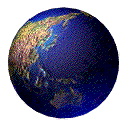

ECON 204 - Introduction to
INTERNATIONAL ECONOMICS

Updated October 6, 2009
|
Econ 204 Course Schedule INTRODUCTION: THE INTERNATIONAL CONTEXT I.
Methodology
A. The Topic: Economic
Globalization, Integration and Liberalization
Why are they
occurring? Is this good, bad, or a mixed bag?
Should it be
managed? Can it be managed?
Read:
Measuring
Globalization, Global Policy Forum
Globalization
of the Economy, Global Policy Forum
B.
Analytical Framework:
Political Economy, Development Economics, Neoclassical Economcs. Read:
Ch.1 Economics, Institutions and
Development: A Global
Perspective, pg. 3-15, Michael
Todaro, Economic
Development, 7th Ed.
INTERNATIONAL ECONOMIC DEVELOPMENT II. Economic Growth versus Economic
Development
A. International Economics,
Development Economics & Their Goals
Read:
Ch.1 Economics, Institutions and
Development: A Global
Perspective, pg. 15-26,
Michael
Todaro, Economic
Development, 7th Ed.
Read:
Ch. 2 Diverse Structures and Common
Characteristics of III. Comparative Development Experiences A. Historically B. Between Rich and Poor Nations IV. Theories of Economic Development Read: Ch. 3 Theories of Development: A Comparative Analysis, pg. 77-104,
Michael
Todaro, Economic Development, 7th
Ed.
INTERNATIONAL TRADE V.
Classical Free Trade
Theory
A. Mercantilism Read: Mercantilism, The Concise Encyclopedia of Economics, Laura LaHaye B. Adam Smith, The Theory of Absolute Advantage & Economic Liberalism
C. David Ricardo & The Theory
of Comparative Advantage
Read:
Why Nations
Trade, Adam Gonelli
The
Economics of Free Trade, The Economist, Sept. 22, 1990
Comparative Advantage, The Concise Encyclopedia of Economics, Donald Boudreaux VI. Critiques of Free Trade Theory A. Traditional Critiques
1. Traditional Protectionism: Economic Nationalism
&
Neo-Mercantilism
a.
Restrictions
to trade: Tariffs
and Quotas
b. Non-tariff
restrictions
c. National
Security, Infant Industries, Import Substitution
d. Export
Orientation and Industrial Subsidies
2. Structuralism: Colonialism, Imperialism,
Dependency, & Global Capitalism
B. Contemporary Critiques
1. New International Economics
a. Externalities
b. Market
Imperfections
2. Strategic or Managed Trade
3. Fair Trade
a.
Reciprocal Standards vs. Reciprocal Policies
Read:
Who Gains From
Trade?, Mehrene Larudee
Confucianism
as a Basis for Capitalism, Morishima Michio
A Statement Aganst Free Competition, Morozumi Yoshihiko French distrust U.S. capitalism, William Pfaff Global trade should answer to social and labor standards, William Pfaff Nations find free markets a little too free, Robert Samuelson Outsourcing Whose Job?, Bradley R. Schiller Winners and Losers, John Cassidy, The New Yorker (2004) VII.
International Free
Trade, the WTO and FTAs
Read:
Ch. 1: The
Promise of Global Institutions, Globalization and Its Discontents,
Joseph E. Stglitz, (2002) Ch. 2: Broken Promises, Globalization and Its Discontents,
Joseph E. Stglitz, (2002)
Ch. 3: Making Trade Fair, Making Globalization Work,
Joseph E. Stiglitz, (2006)
INTERNATIONAL
FINANCE
VIII.
The International
Monetary System: the World Bank and IMF
Exchange Rates
A. Fixed versus floating exchange
rates
B. Strong versus weak currencies
Monetary Policy
A. The role of interest rates and
inflation
B. Managing national interest rates
C. International monetary policy
coordination
IX.
International Finance
A. The Current World Financial
Crisis (2008)
B. The role of Multinational
Corporations
C. Capital and Labor
Mobility
***This Outline is
subject to change at the discretion of the instructor.***
|
Copyright Phil Martinez and Lane Community College